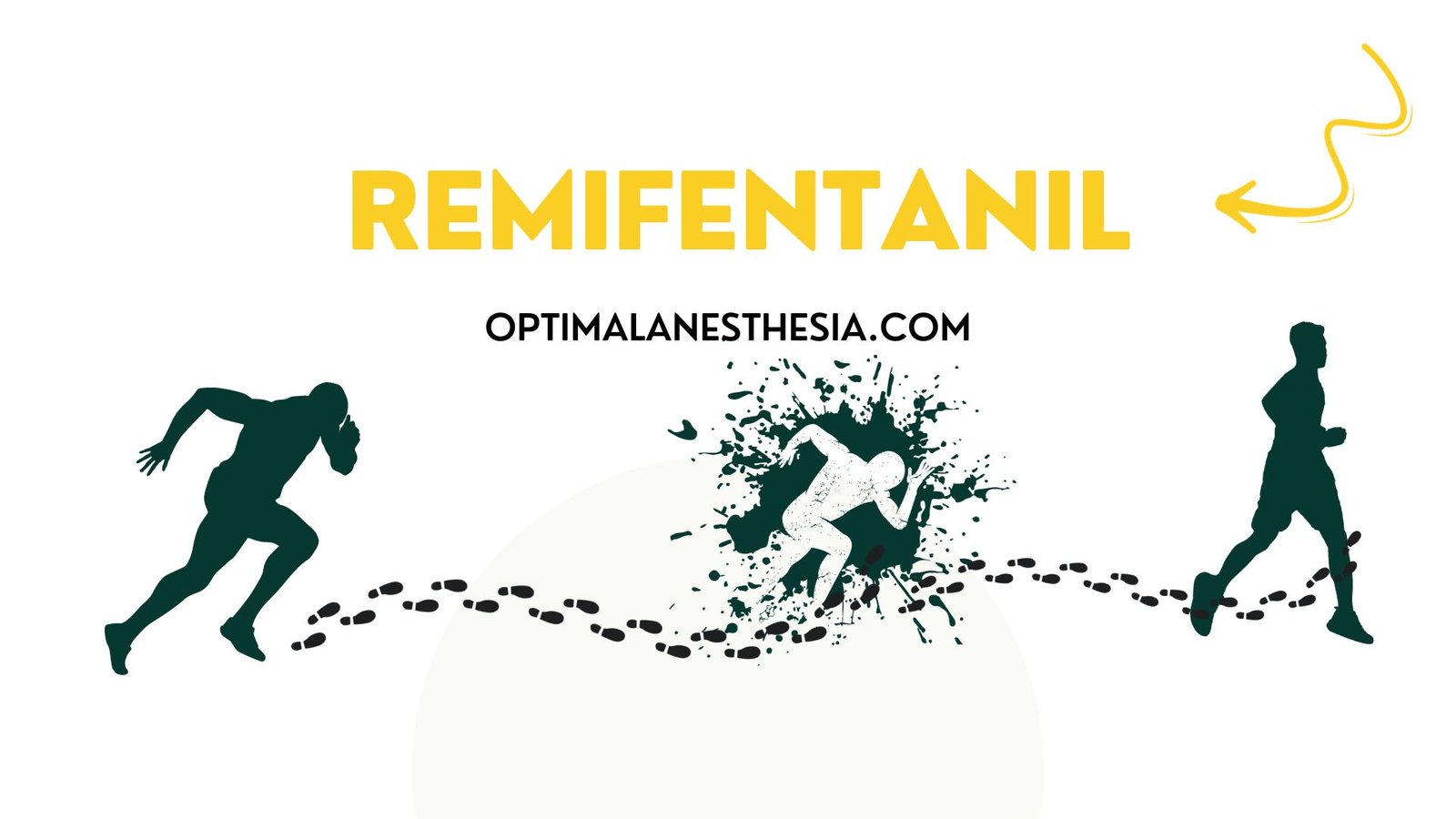A Brief History
Remifentanil, a potent µ-opioid agonist, stands as a testament to the ever-evolving landscape of anesthesia. Its remarkable journey began in the early 1990s when pharmaceutical researchers set out to develop a new opioid with unique properties that could redefine anesthesia practices.
The Chemical Innovation
Remifentanil, formally known as 3-(4-methoxycarbonyl-4-[(L-oxo-propyl)-phenylamino]-L-piperidine) propanoic acid methyl ester, was created through a significant chemical innovation. What makes it structurally unique among opioids is the addition of a methyl ester group to the N-acyl side chain of the piperidine ring. This seemingly minor alteration was the key to its distinctive pharmacokinetics.
Pharmacological Marvel
Remifentanil entered the scene as a powerful µ-opioid receptor agonist, approximately 15 to 20 times as potent as alfentanil, an existing opioid. However, its true magic lay in its pharmacokinetics:
| Pharmacokinetic Characteristic | Description |
|---|---|
| Potency | 15-20 times more potent than alfentanil. |
| Onset of Action | Rapid onset, within seconds. |
| Duration of Action | Ultra-short, allowing precise control. |
| Blood-Brain Equilibration | Rapid effect-site equilibration. |
| Metabolism | Hydrolysis by nonspecific esterases. |
| Clearance | Extraordinary clearance of 3 L per minute. |
| Volume of Distribution (Vd) | Small Vd, minimal accumulation. |
| Context-Sensitive Half-Time | Approximately 4 minutes, independent of infusion. |
These pharmacokinetic attributes allowed for precise titration of drug effect, revolutionizing the practice of anesthesia.
Administration and Dosage
In clinical settings, remifentanil is administered at doses of 1-2 mcg/kg for induction during anesthesia. For maintenance, infusion rates range from 0.05 to 2.00 mcg/kg/minute, with adjustments made based on the patient’s response. The ultra-short duration of action allows for rapid adjustment to achieve the desired level of anesthesia.
The Ester Structure
The ester linkage in remifentanil’s chemical structure proved to be its defining feature. This structural component, susceptible to rapid hydrolysis by esterases found in plasma and tissues, contributed significantly to its unique pharmacokinetic profile. The rapid metabolism of remifentanil resulted in a transient effect, setting it apart from other opioids.
Total intravenous anesthesia (TIVA) witnessed a transformation with the inclusion of remifentanil. It is typically combined with intravenous hypnotic agents like propofol. The dosing protocol for TIVA can be tailored to individual patient needs, ensuring optimal anesthesia depth and rapid recovery. Infusion pumps are utilized to maintain a consistent and precise drug delivery rate.
Clinical Applications
Remifentanil found its place in various medical procedures, reshaping the landscape of anesthesia:
- Neurosurgery: It maintains hemodynamic stability and allows for faster emergence, particularly crucial in delicate brain surgeries.
- Ophthalmology: Remifentanil plays a pivotal role in retrobulbar blocks, preventing pain during eye procedures.
- Otolaryngology: During microsurgery, it offers hemodynamic stability, reduces patient movement, and facilitates rapid emergence.
- Obstetrics: In cases where epidural analgesia is contraindicated or not preferred, remifentanil provides an alternative through patient-controlled analgesia.
Distinctive Features
| Distinctive Feature | Description |
|---|---|
| Context-Sensitive Half-Time | Unlike other opioids, remifentanil maintains a consistent half-time, regardless of infusion duration. |
| Age Consideration | Recovery is minimally affected by age, but the elderly exhibit increased sensitivity, necessitating dose reduction. |
| Weight Matters | Pharmacokinetics are closely related to lean body weight (LBW), not total body weight (TBW). |
Adverse Effects and Management
While remifentanil offers groundbreaking advantages, it comes with its share of side effects:
| Adverse Effect | Management |
|---|---|
| Respiratory Depression | Reversible with naloxone; prompt recovery of hypoxic responses after infusion cessation. |
| Muscle Rigidity | Adjust administration rate; neuromuscular blocking agents in intubated patients. |
| Hyperalgesia and Tolerance | Combining with longer-acting opioids; employing multimodal analgesia techniques. |
Modern Anesthesia Landscape
Today, remifentanil is a cornerstone of anesthesia, effectively utilized in a range of medical procedures. Its rapid onset and offset, coupled with precise titration capabilities, make it an invaluable tool for anesthesiologists worldwide. Understanding its unique pharmacological properties has allowed for safer and more effective patient care.
Conclusion
The journey of remifentanil, from a chemical innovation to a staple in anesthesia, exemplifies the power of pharmaceutical research in advancing medical practice. This remarkable opioid has played a pivotal role in reshaping the landscape of anesthesia, allowing for more precise and patient-centric care.


